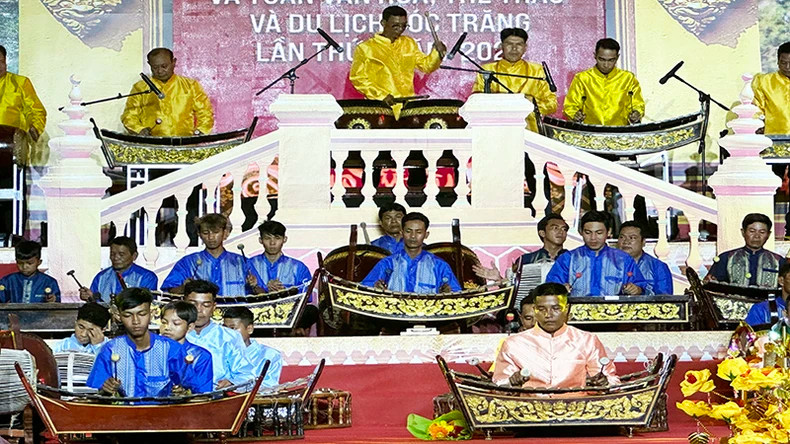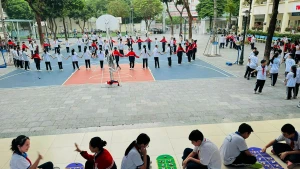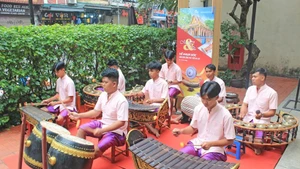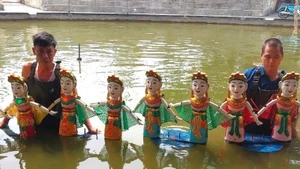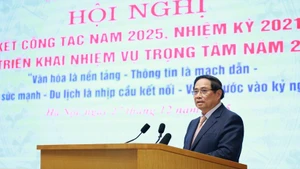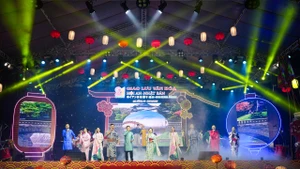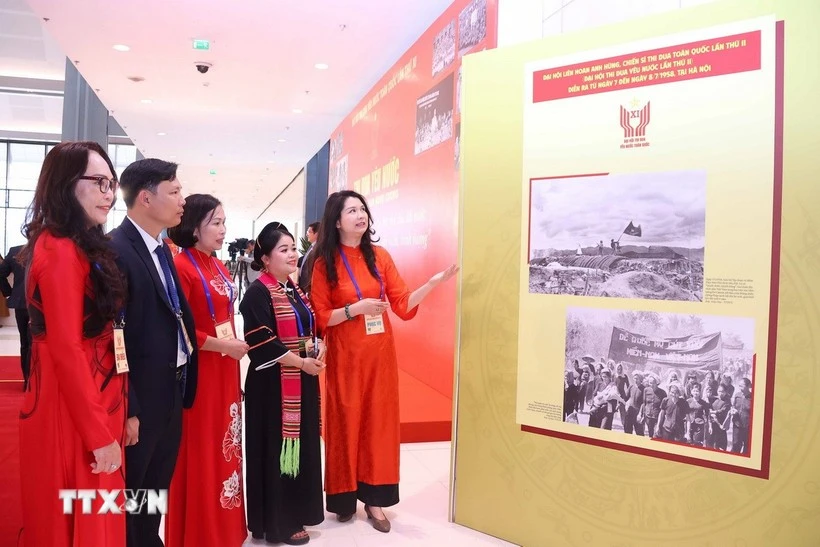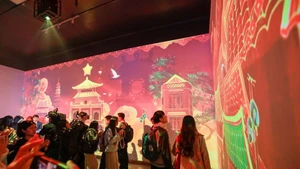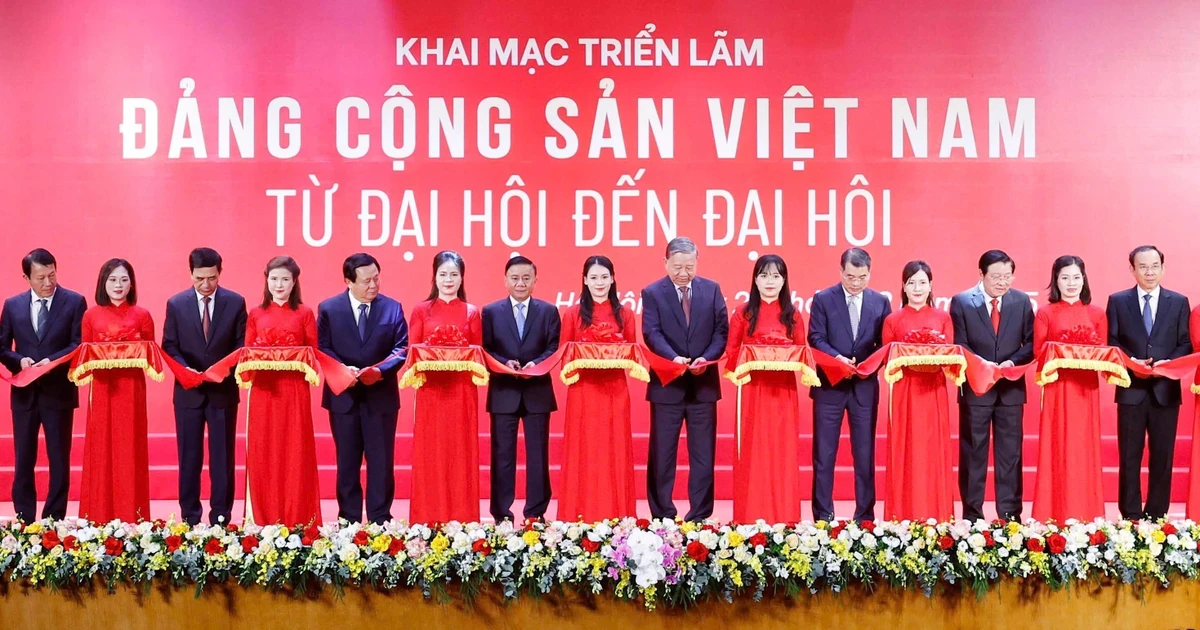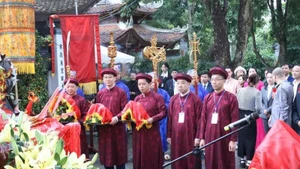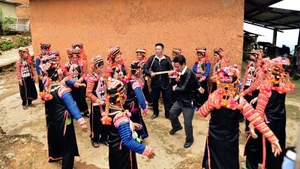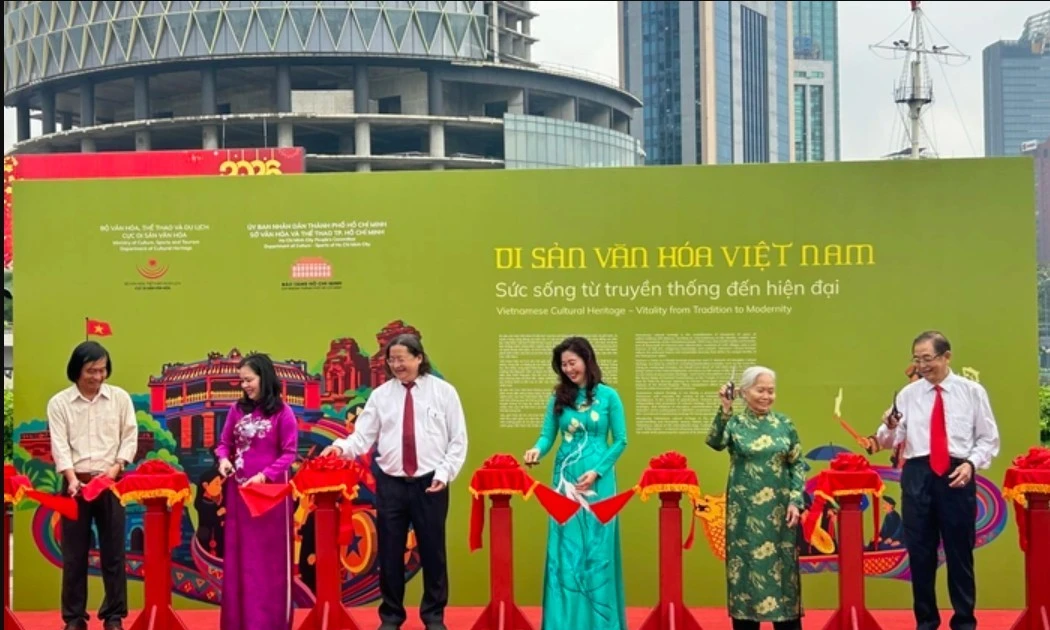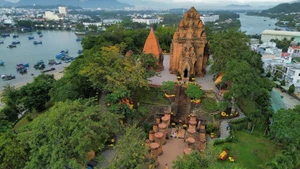‘Ngu am’ music is performed by an orchestra composed of five sets of musical instruments made from five different materials, creating five distinct timbres: metal, iron, wood, wind, and skin.
Each type of instrument is precisely tuned to ensure harmony within the orchestra, producing unique sounds that range from deep and resonant to high-pitched, sweet, and melodious, deeply moving the listeners.
Each group includes one to three types of instruments, forming a complete ensemble of nine instruments: Srolai Pinn Peat (wind group); Roneat Ek, Roneat Thung (wood group); roneat Dek (metal group); Kuong Vong Toch, Kuong Vong Thum, Chhung (metal group); Sampho drum, and Sko Thum drum (skin group).
According to musician Dr Son Ngoc Hoang, in traditional terms, ‘ngu am’ music is closely associated with the rituals and daily practice of Theravada Buddhism in Khmer temples and communities. This music form has ancient influences from the courts and religions of India and several Southeast Asian countries such as Cambodia and Thailand.
‘Ngu am’ music was introduced to Khmer culture in prehistoric times and continues to be practiced today. It plays a crucial role in religious contexts, participating in all major Buddhist ceremonies and rituals in temples, thereby becoming an integral part of Khmer culture that deeply influences the lives of its people from childhood to old age.
In Soc Trang Province in particular, the ‘ngu am’ music of the Khmer people holds historical-cultural significance, spiritual value, ethical value, and artistic-aesthetic value, while fostering community cohesion. The sound of Sko Voth drums combined with ‘ngu am’ music signals the community that it is time for religious ceremonies.
This music allows people to unite their spirits and create natural yet strong communal connections.
Tran Minh Ly, Director of the Soc Trang Provincial Department of Culture, Sports and Tourism, noted that traditionally, the performance art of Khmer ‘ngu am’ music was limited to temples and religious rituals.
Nowadays, due to societal development and improved living standards, the scope of ‘ngu am’ orchestras have expanded while becoming more popular.
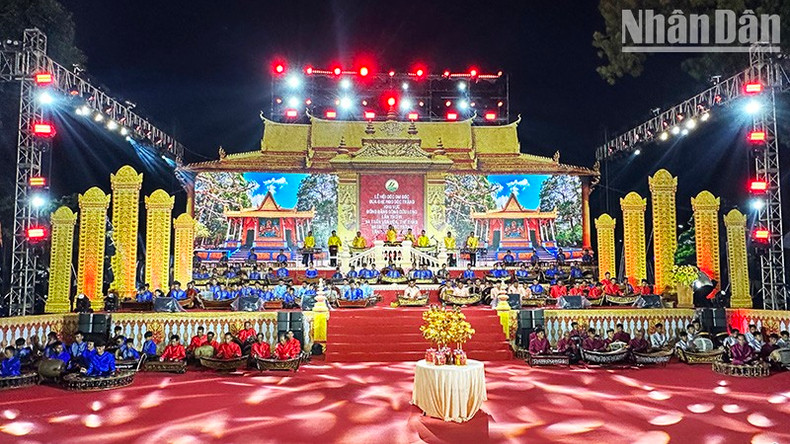 |
| A performance of 'ngu am' music at Ooc Om Boc Festival 2024 in Soc Trang Province |
The music genre has participated in professional programmes and has been combined with other instruments for musical arrangements in theatre performances and traditional festivals within the Khmer community.
In recent years, thanks to great attention from the government towards ethnic affairs, particularly projects aimed at preserving and promoting the cultural values of ethnic minorities linked to tourism development, ‘ngu am’ music has been further preserved and promoted among Khmer ethnic communities.
Accordingly, the Soc Trang Provincial Department of Culture, Sports and Tourism has invested in purchasing numerous ‘ngu am’ orchestras to support clubs and Khmer temples in the province while organising training classes to teach various forms of intangible cultural heritage, including ‘ngu am’ performing arts.
To demonstrate efforts in preserving this intangible cultural heritage, over 200 artisans have recently gathered to practice advanced rhythms for a large-scale arts programme honouring ‘ngu am’ music.
The programme was recognised by the Vietnam Records Organisation (Vietkings) for setting the record as the largest performance program of ‘ngu am’ music by the Khmer people in Soc Trang Province.
